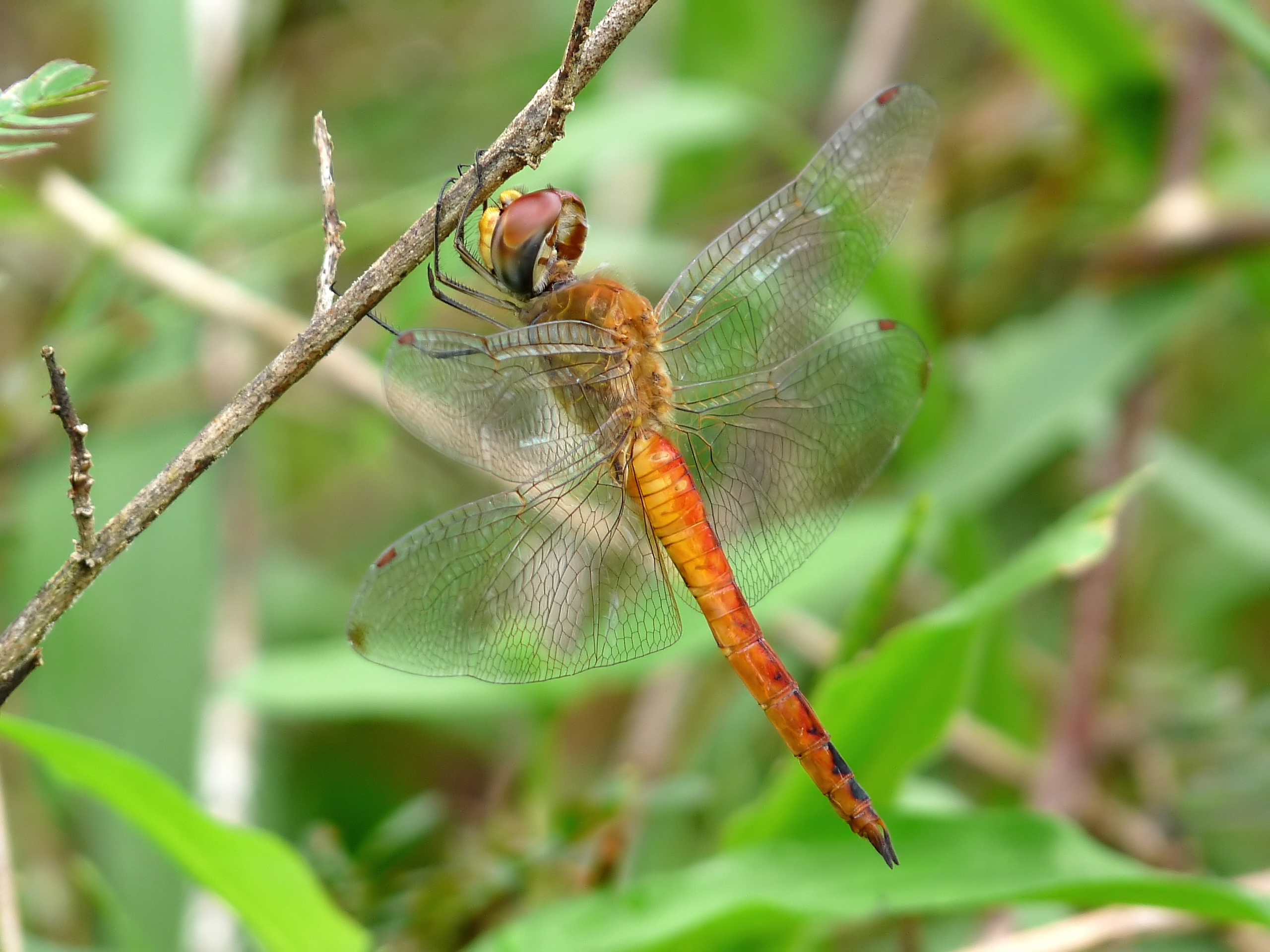Wanderlust Dragonflies?
A Great Migration
When someone mentions the word migration, your mind might race to the great wildebeest migration through East Africa, of sea turtles covering multiple oceans in order to nest in their region of birth, or of one of the many bird species that cover vast areas to go from wintering grounds to breeding grounds (or vice versa).

The globe skimmer as seen in prior to its great migration across the Western Indian Ocean. Photo by Jeevan Jose, Kerala, India | ‘Pantala flavescens by kadavoor’ via Wikimedia Commons
If you are on D’Arros, your thoughts may go to a dragonfly, called the globe skimmer (Pantala flavescens); this dragonfly was found on D’Arros passing through in November and April, and it has a phenomenal story. The globe skimmer is one of the most widespread of the dragonfly species. It also has the longest known migration of any insect, let alone any other species of dragonfly (1,2,3). Their migration takes them from India to east Africa and back, covering distances of around 14,000 to 18,000 kilometres (1)! Imagine, a tiny insect, covering that far of a distance. What is also remarkable about this dragonfly is that the migration entails crossing the Indian Ocean, a distance of over 3500km (2,4). This transoceanic crossing is what brings them through the Seychelles.
For such a tiny creature, with such a short life span, what would drive it to travel such distances? It’s all about fresh water. The globe skimmer requires fresh water to reproduce. The migratory route follows shifting weather fronts, allowing it to also follow seasonal rainfall in order to reproduce (2). In case you weren’t already impressed, they also fly at altitudes of over 1000m along these winds. Several bird species also migrate along the same pathway (using the same winds) to their wintering grounds in Africa, seemingly using these dragonflies as a convenient food source.
Next time you think of a big migration, give some credit to these globe skimmers, who for their size and lifespan, cover enormous distances.
___
(1.) Hobson KA, Anderson RC, Soto DX, Wassenaar LI (2012) Isotopic evidence that dragonflies (Pantala flavescens) migrating through the Maldives come from the northern Indian subcontinent. PLoS One 7:e52594. Pmid 23285106
(2.) Anderson RC (2009) Do dragonflies migrate across the western Indian Ocean? Journal of Tropical Ecology 25(4): 347-358
(3.) Chapman JW, Reynolds DR, Wilson K (2015) Long-range seasonal migration in insects: Mechanisms, evolutionary drivers and ecological consequences. Ecol Lett.18: 287-302
(4.) Samways MJ, Osborn R (1998) Divergence in a transoceanic circumptropical dragonfly on a remote island. J Biogeogr. 25: 935-946
